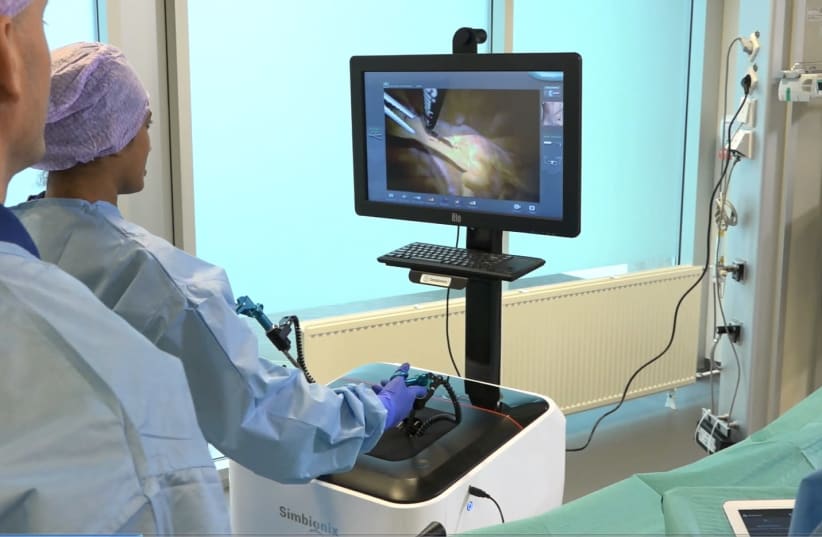Even for the most experienced, steady-handed surgeon, entering the operating theater to perform a complex surgical procedure can lead to considerable anxiety.
But what if, suddenly, it is no longer the first time the surgeon will tackle the task at hand?
At the Tel Aviv offices of 3D Systems, a talented group of medical, technology and graphics experts have made it their mission to ensure that surgeons will meet even the most complex procedures hands-on before entering the operating theater. They are accomplishing this through the company’s pioneering three-dimensional and virtual reality-based medical and surgical simulators.
“We’re leading a revolution in how physicians are trained,” Ran Bronstein, 3D Systems vice president and chief research and operations officer, told The Jerusalem Post.
“Pilots have been using simulators for many years. But there are more physicians than pilots. And sometimes physicians make a greater number of mistakes than pilots. To prevent these mistakes and improve patient safety and procedure outcome, we decided to develop a medical simulator based on the same concept.”
Bronstein has headed the development of the state-of-the-art simulators for more than two decades, with Simbionix, the company he founded, which was acquired for $120 million in 2014 by California-headquartered 3D Systems.
Walking into the company’s offices, you’ll witness the incredible sight of developers wearing virtual reality headsets and “performing” invasive spine surgeries, endovascular operations, endoscopic and laparoscopic procedures, and robot-assisted operations.
It’s also a sight replicated in many hospitals, with almost 5,000 of the company’s simulators now installed in facilities across the globe.
“Physicians can practice on animals or on cadavers, and sometimes need to practice on actual patients. We want them to be very well trained, and computerized simulation is something that aims to replace these old methods,” Bronstein said.
Today, 3D Systems counts hospital training centers and medical device companies as key clients of their FDA-approved technology. When medical device companies, such as Boston Scientific and Johnson & Johnson, wish to launch a new product, they can now use a customized medical simulator for training purposes.
“One of the things we understood from the beginning is that in order to validate the technology, we need a very strong team in touch with physicians. There is no objective validation point. Only physicians can tell us whether what we have developed is good or not,” said Bronstein.
“The fact that virtual reality has become such a big thing in the last two to three years has seen the company gain more traction and growth. This is one of the nice applications of virtual reality, using it to train and impact the healthcare community.”
Unlike aviation simulators that follow particular technical specifications well-known to engineers, however, medical simulators add the particularly demanding requirement of needing to mimic the unique bodies of each patient.
“In 2007, we started to develop a breakthrough technology: patient-specific simulation, no longer using a generic case but analyzing MRI and CT scans and automatically transporting them into the simulator,” said Bronstein.
“This has two consequences: Firstly, you can practice an operation before doing the real one and, secondly, we are enriching the content served by the simulator.”
In the US, surgeons who perform colonoscopies must first successfully complete an exam on the company’s simulator, and the company expects similar simulation exams to gradually become required for all procedures. In the field of robotic surgical systems, most of industry-leader Intuitive Surgical’s machines already come with 3D System’s simulation software.
“The operating room is becoming more and more complicated, with more modules: virtual reality, X-Ray, ultrasound, MRI, CT and robotics,” said Bronstein.
“It is becoming an increasingly technological and complicated environment. Without a simulator, there will be no ability to carry out surgery.”
In addition to computerized simulations, the company also specializes in anatomical modeling and medical-device design. Its high-quality 3D printing services enable the personalization of implants and instruments for a variety of surgical applications.
“Today, most of the implants are printed, because when you make three-dimensional prints, you can also get special textures, and the implants can really be absorbed by the body,” Inbal Mazor, 3D System’s vice-president of healthcare marketing & products, told the Post. “There are printed, generic implants, but they are not of the same quality.”
